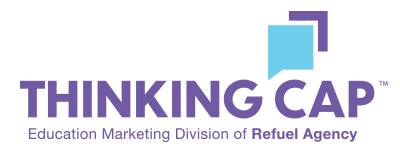The pandemic impacted everyone, at every age and stage of life. The higher education sector was heavily impacted, as well, in many different ways. On one hand, many students decided to postpone their transition to higher education due to the inability to attend in-person classes, financial concerns, or a lack of clarity on their direction due to the impact of the pandemic. But on the other hand, many students decided that a pandemic was the perfect opportunity to get ahead in their education through online classes, and the increased access to higher education proved to be a benefit for them.

As we emerge from a year that upended many systems in higher education, the question on everyone’s mind now is: How has this pandemic affected the future of higher education, and where are we going from here? Keep reading to learn about the top 3 higher education trends we think you should be watching as we continue through 2021 and beyond.
Read next: Is Your Graduate School Recruitment Strategy Working? Our Research Found Out
1. There’s an increased demand for flexible, online education options.
When the pandemic occurred, higher education institutions nationally had to adopt online learning models quickly, troubleshooting as they went. And as schools slowly began to reopen, many still offered an increased number of online classes as well as hybrid learning solutions.
The option of online education and flexible schedules provide prospective students with additional value and incentive to enroll. But for higher education institutions, they also increase competition between schools. New business models and new styles of learning have fueled the competition for students’ attention and enrollment.
This trend seems particularly relevant for graduate and professional certification students. According to recent data, spring 2021’s graduate enrollment increased by nearly three times the pre-pandemic levels. Public 4-year institutions saw the greatest lift in enrollments (6.2%), followed by private for-profit institutions (4%) and then private non-profit institutions (1.5%). This data shows us that while undergraduate students still largely prefer in-person learning, post-undergraduate students greatly benefit from the flexibility that online learning allows — and actually enroll in greater numbers when it’s offered.
A pandemic that required the country to stay home for a year ignited rapid technological changes that created a demand for new levels of agility. Now, the key is for higher education institutions to keep up.
Read next: How to Recruit Transfer Students
2. The ability to demonstrate and promote diversity is essential.
If 2020 showed us anything, it’s that the cultural landscape around us is shifting. More specifically, there is no longer any tolerance for silence or apathy in terms of conversations about diversity and intentional action towards meaningful and positive change.
The priorities and expectations of those entering higher education have risen exponentially. If higher education institutions have any chance of standing out from their competition and receiving enrollment and support, they need to align their statements with their actions, and take steps toward promoting diversity and inclusion that are meaningful to students.
The American Marketing Association (AMA) expands on this well, writing that “Institutions that want long-term success and to be taken seriously for their DE&I work should dismantle established process and practices — the ones that were most likely centered on the needs of a traditional undergraduate student with above-average means — to rebuild an infrastructure centered on the needs of a more diverse student body”.
Read next: How to Create Data-Driven Student Personas for Higher Education Marketing
3. Frequent and personalized communication with students is nonnegotiable for successful recruitment.
In the age of hyper-personalized digital marketing tactics across platforms and industries, students expect higher education institutions to know who they are and communicate with them based on that knowledge. And if anything was going to accelerate that trend towards personalized messaging, it was a pandemic.
According to recent research from Salesforce, an institution’s pandemic response was cited as a major reason among non-returning students for why they chose not to enroll this past fall. Additionally, 25% of students enrolling in a different university from a year ago said they were doing so because they disapproved of the way their previous university handled the pandemic.
Read next: Your Complete Guide to Higher Education CRM
These numbers clearly illustrate how critical frequent and personalized communication with current and respective students has become. This trend will only continue to determine whether your university stands out from the crowd, or begins to fall behind. Students want to feel understood, and in light of a pandemic that introduced incredible uncertainty in their future educational and financial plans, they want to feel assured that your university will be transparent in looking out for their best interests.
Are you ready to take your higher education marketing to the next level? Contact us today for your custom media and marketing plan.




